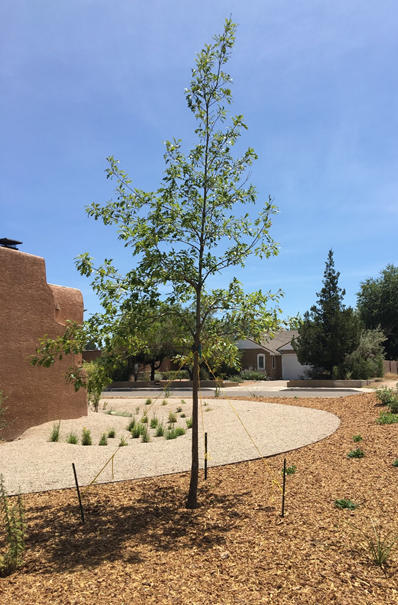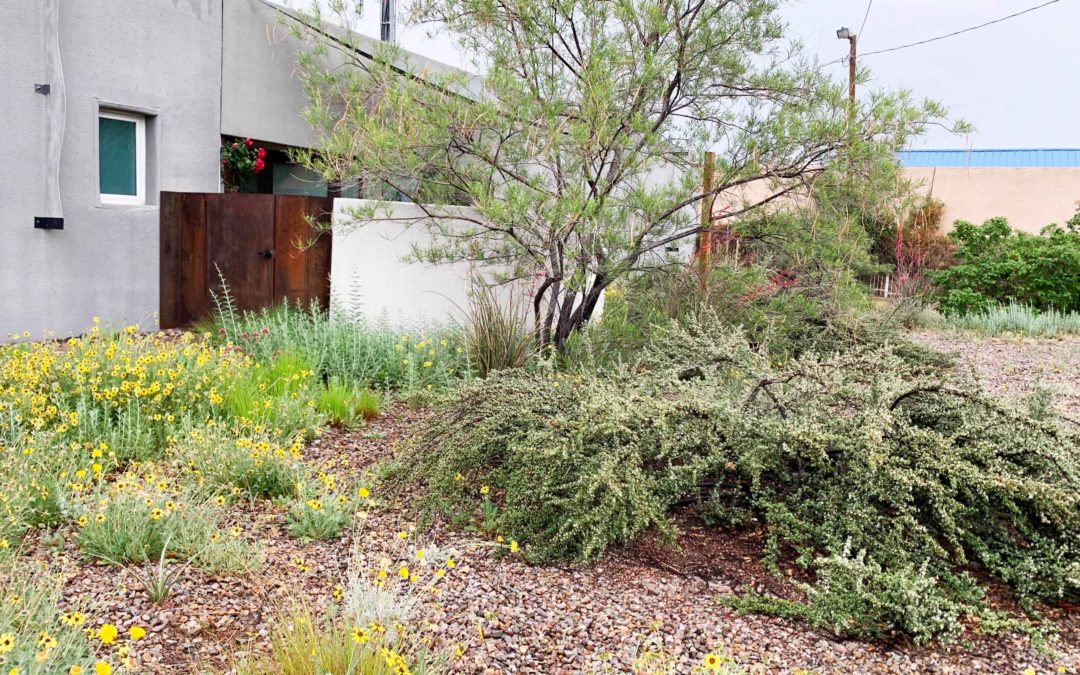Irrigation is essential to give plants a healthy start, so they become well-rooted in the landscape. A great way to find out the water needs of individual plants is by checking out the ABCWUA Xeriscape Guide and then follow the seasonal watering recommendations.
When your landscape is new, the best thing to do is observe your plants and respond to their cues. Sometimes there are a few plants that seem to need water more often than others at first. It is better to put higher flow rate emitters on these plants or give them extra water by hose than it is to add more water to everything in the landscape. Once they develop a better root system, these plants can be watered just like all the plants around them.
Here are three frequently asked questions about watering new plants:
Where do I place drip emitters?
Drip emitters should be placed where the backfill meets the root ball. Larger plants need several higher flow rate emitters to water the transplanted roots plus the backfill. Make sure the water goes deep enough to water the entire root ball plus the soil below the roots.
How do I know what plants to group in my yard?
Plants grouped on the same irrigation valve should have similar water needs.
How often should I water my new plants?
Actual water use varies seasonally and as the plants grow. It makes sense to give plants less water less frequently during cooler weather and more water more frequently during extremely hot, windy weather. To encourage deep roots, water must go deeper into the soil as the plants grow. Deeply rooted native shrubs need water to go down 24 inches once a month. Fruit trees, which have shallow roots, need watering to go to a depth of 18 inches every week while they are producing fruit from mid-April to September.
Plants with very low water needs may be able to survive on rainfall alone, once they are well-rooted in 3 to 5 years. If you want them to be more attractive, water them monthly in the summer, especially if monsoon rains are late or scant.
Plants with medium water need to benefit from watering twice monthly, May through September, but only once a month the rest of the year.
Plants with high water needs should be watered weekly, May through September, twice monthly during March, April, and October, and monthly the rest of the year.
As roots start to go deeper into the soil, it’s usually best to water less often but for longer cycles so the roots continue to go down further into the soil. But here are a couple of things to keep in mind!
- Watering for more than a 3 or 4-hour cycle in well-drained soil will put the water deeper than roots will grow.
- In poorly drained soil, water that goes too deep could inhibit the rooting of arid-adapted plants.
As plants root out, they will become more resilient and need less observation.



